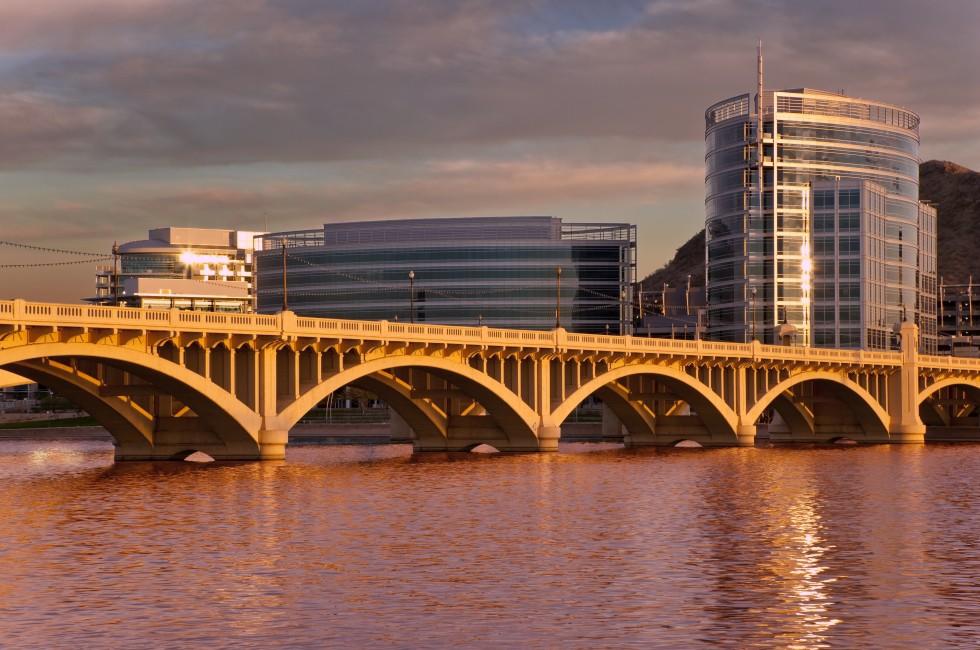Tempe is located in the East Valley section of metropolitan Phoenix; it is bordered by Phoenix and Guadalupe on the west, Scottsdale and the Salt River Pima–Maricopa Indian Community on the north, Chandler on the south, and Mesa on the east. Tempe is also the location of the main campus of Arizona State University.
The Hohokam lived in this area and built canals to support their agriculture. They abandoned their settlements during the 15th century, with a few individuals and families remaining nearby.
Fort McDowell was established approximately 25 mi (40 km) northeast of present downtown Tempe on the upper Salt River in 1865 allowing for new towns to be built farther down the Salt River. US military service members and Hispanic workers were hired to grow food and animal feed to supply the fort, and less than a year later, had set up small camps near the river that were the first permanent communities in the Valley after the fall of the Hohokam. (Phoenix was settled shortly afterward, by 1867–68.) The two settlements were ‘Hayden’s Ferry’, named after a ferry service operated by Charles T. Hayden, and ‘San Pablo’, and were located west and east of Hayden Butte respectively. The ferry became the key river crossing in the area. The Tempe Irrigating Canal Company was soon established by William Kirkland and James McKinney to provide water for alfalfa, wheat, barley, oats, and cotton.
Pioneer Darrell Duppa is credited with suggesting Tempe’s name, adopted in 1879, after comparing the Salt River valley near a 300-foot (91 m)-tall butte, to the Vale of Tempe near Mount Olympus in Greece.
Until the early 1960s, Tempe was a sundown town where African Americans were permitted to work but forced to live elsewhere. In 1965, Warren and Carol Livingston were the first African Americans to buy property in Tempe.
In 1885, the 13th Arizona Territorial Legislature chose Tempe for the site of the Territorial Normal School, which became Arizona Normal School, Arizona State Teachers College, Arizona State College and finally Arizona State University.
The Maricopa and Phoenix Railroad, built in 1887, crossed the Salt River at Tempe, linking the town to the nation’s growing transportation system. The Tempe Land and Improvement Company was formed to sell lots in the booming town. Tempe became an economic hub for the surrounding agricultural area. The Maricopa County Board of Supervisors incorporated the town of Tempe in 1984.
The completion of Roosevelt Dam in 1911 guaranteed enough water to meet the growing needs of Valley farmers. On his way to dedicate the dam, former President Theodore Roosevelt applauded the accomplishments of the people of central Arizona and predicted that their towns would be prosperous cities in the future. Less than a year later, Arizona was admitted as the 48th state, and the Salt River Valley continued to develop.
On August 30, 1971, Tempe was hit by a rare F2 tornado that injured 41 people, the most injuries recorded from a tornado in Arizona, and caused damage in upwards of $3 million. One indirect fatality occurred when a man died from a heart attack during the storm.
In the 20th and 21st centuries, Tempe has expanded as a suburb of Phoenix, and as a center of education and commerce.


